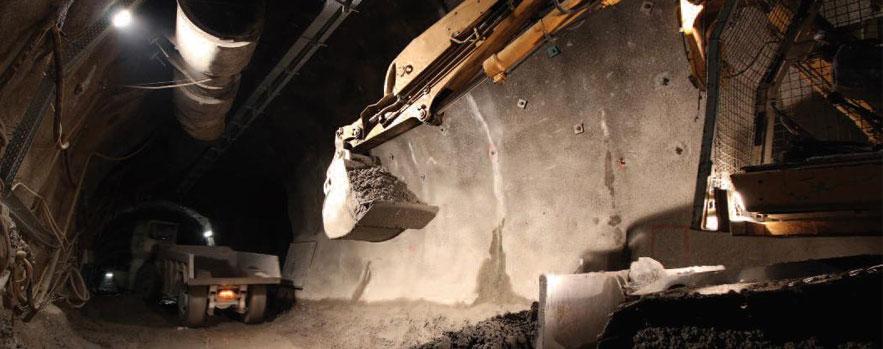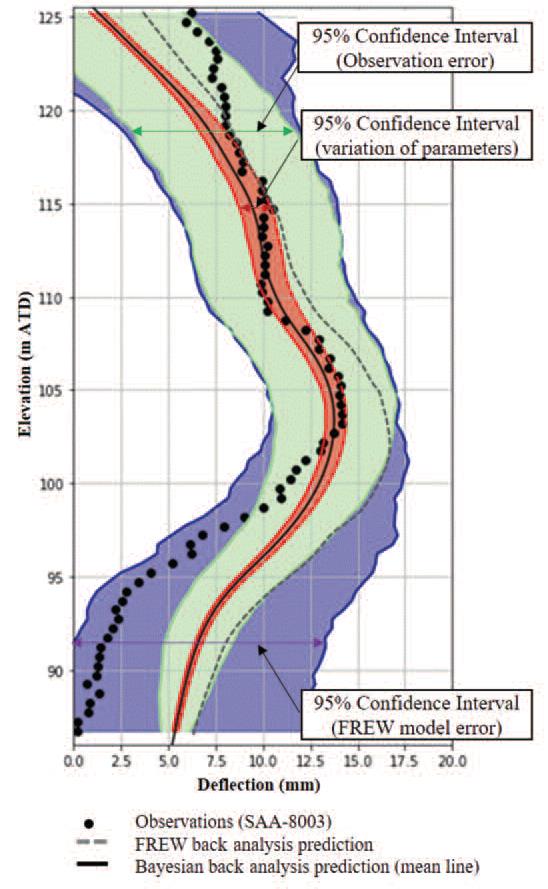
The OM approach
Ralph Peck first introduced the Observational Method (OM) in the 1960s and it is most often used today as a ‘best way out’ process when unforeseen events occur. The method can also provide a formal way to reduce over-design in excavations and deliver projects more economically and efficiently by allowing plans to be modified before construction or during construction. Rapid redesign would then be required to provide new construction plans. CSIC Investigator Dr Giovanna Biscontin is currently exploring the potential benefits of and barriers to the OM in geotechnical engineering.
The OM in practice
The OM was formalised in the Eurocode (the 10 European Standards for structural design) in 1987 and the most recent version of CIRIA 760 (2017) clearly outlines a process for using the OM.
The four OM approaches in the CIRIA guide distinguish between the OM applied as a design tool at the start of the project (‘ab initio’ approach, optimistically proactive starting from most probable parameters; ‘ab initio’ approach, cautiously proactive starting from characteristic parameters) or as a reactive measure after construction is under way (‘ipso tempore’ approach, to make modifications at the time; and ‘ipso tempore’, reactive to make corrections).
This process for using the OM from the start of a project enables greater savings in materials and programme by reducing excessive conservatism of the initial design as construction progresses. Despite the availability of formal paths to the implementation of the OM, barriers in contractual design, monitoring, construction management (risk control, time and cost) and training mean the approach is seldom used in practice.
OM enables savings for Crossrail
In the UK, OM has been applied to a number of Crossrail deep excavations, including the head walls at Canary Wharf station, the Moorgate shaft at Liverpool Street station, the Durward Street shaft at Whitechapel station and the Western Ticket Hall at Tottenham Court Road. Before construction of the ticket hall at Tottenham Court Road station, the contractor carried out a value engineering study which identified the opportunity for an OM approach. This led to more comprehensive monitoring being installed and enabled the possibility of modifying the design at early stages through back analysis using the inclinometer data.
By the third excavation stage at Tottenham Court Road, movements were less than predicted and the most probable soil design parameters had been calibrated through back analysis, enabling the lowest level of strutting to be omitted, with the result of saving four weeks of construction time and £715,000 in cost.
OM ‘ab initio’ approach to maximise savings
Department of Engineering PhD student Ying Chen, supervised by Dr Biscontin, applied back analysis to the construction of the ticket hall, using three numerical approaches – FREW, PLAXIS 2D and LSDyna 3D. She improved the calibration of the most probable soil design parameters of London Clay for excavation design through both 2D and 3D FEM back analysis. These results can be applied to future excavations using the OM ‘ab initio’ approaches to maximise savings. Wall deflections as an example of the combined results of this analysis are displayed in Figure 1.
The coloured areas in Figure 1 mark confidence intervals associated with different variables, meaning that there is 95 per cent probability future observations will lie within these bounds. As more variables are incorporated into the model, uncertainties are reduced and the confidence intervals become more certain.
Figure 1 – Tottenham Court Road Western Ticket Hall wall deflection at the final excavation stage: observations (SAA-8003 data) versus predictions from back analysis
Barriers to and opportunities for OM applications
The potential benefits of using OM in excavations is demonstrated by the results seen in the construction of the ticket hall at Tottenham Court Road. In March 2018 Dr Biscontin hosted a workshop on ‘The Observational Method for Supported excavations: Research Challenges for Removing Barriers’ at the University of Cambridge for invited industry colleagues. Attendees came from a range of organisations involved in large-scale excavation projects including designers, contractors and
project owners. The aim of the CDBB-funded and CSIC-supported workshop was to define research questions to help industry overcome barriers to using the OM and provide the right tools to progress use of and benefits from the method.
ARUP Associate Director Stuart Hardy presented the four approaches to OM in the CIRIA guide and attendees at the workshop discussed the barriers and opportunities for implementing these approaches in practice:
- Contractual issues between all parties prevent implementation
- More regulatory guidance is needed for progress
- Demonstrating savings promotes interest and raises awareness
- Risk management needs to be detailed and understood by all parties
- More flexible scheduling allows for contingency plans depending on monitoring information
- Monitoring system’s reliability increases confidence
- Automation of the decision-making process provides objectivity.
The workshop also covered monitoring systems for the OM, methods and processes for back analysis, and real-time analysis with statistical approaches.
Additional OM research work
The 2018 workshop discussed industry concerns about monitoring, quality of data and biased reading when using the OM. The ‘most probable’ parameters used in OM are vague and not sufficiently defined. Addressing this issue, Cambridge PhD student Yingyan Jin has applied machine learning techniques for a more rigorous approach to enable better decision-making in the OM. The research uses Bayes' theorem to update the probability for a hypothesis, as more evidence and monitoring data becomes available. For geotechnical engineering, the approach produces a set of parameters that provides an unbiased estimate of ground movement most likely to occur. The method can incorporate all sources of information, including prior knowledge of expert experience and site investigation. In addition, the randomness in the parameters is explicitly accounted for and confidence intervals can be drawn around mean values. This will also enable the response of the soil and excavation in the next stages of construction to be predicted and confidence intervals to be defined around the mean predicted values. As more data is fed into the process, the uncertainty is reduced and the confidence intervals become narrower. This can potentially allow a broader approach to risk assessment and a more rigorous definition of thresholds for alert levels.
The future of OM
Dr Biscontin is planning the next step for the development of research to improve the efficiency of the machine learning process when coupled with more sophisticated modelling systems to improve decision-making. As demonstrated by the Crossrail
excavation at Tottenham Court Road, using OM can make a significant difference to savings in construction time and costs.
Contact: Dr Giovanna Biscontin

